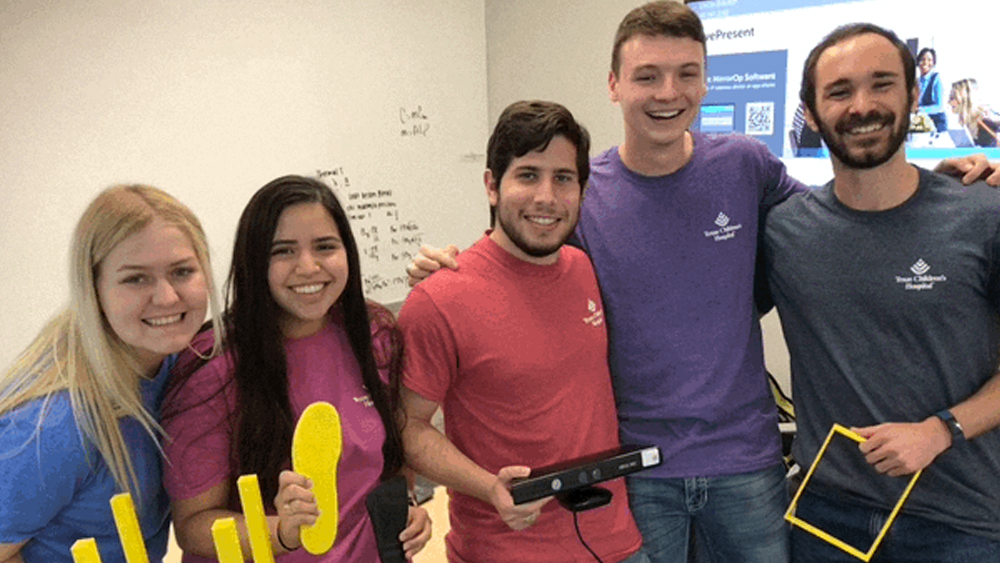
One senior design team in the Department of Biomedical Engineering at Texas A&M University had to crawl before they could walk while designing an orthotic to help children move easier.
Working with Texas Children’s Hospital, the team designed an orthotic device that will help children with foot-ankle malalignments, some patients as young as six months old. The younger children are treated for these malalignments, the less risk of damage later on in life.
Current orthotics are either generalized pieces designed for adults or customized devices that take lots of time and money to make because it involves shipping a mold of the foot to a company. The team had to develop a plan and prototype that landed at the perfect intersection of timely and customizable. Another aspect of their project is a business plan that explains costs, associated risks and anticipated profit margins.
“It’s been a lot of trial and error, a lot of different testing,” said Emily Burrows. “Our sponsor is very ambitious. I think that pushes us and challenges us more and gives us that drive to be successful. They’ve been helpful and clear on what they want.”
The team said they had a fun time watching how their project progressed over the last two semesters, as they had to take knowledge from the classroom and try to apply it to processes they had little experience in: 3D scanning, software manipulation and 3D printing on a medical-grade scale. On top of that, the COVID-19 pandemic caused the students to find novel ways to complete their project.
The roughest first draft of their design involved a GoPro, a stick and a shoebox. Although it was an intimidating challenge, it meant that every moment of progress and success was a milestone to celebrate along the way, from finding out that they could use an Xbox Kinect as a scanner to applying for a $50,000 grant.
“With this project, the scope is big and there’s so many things. But we’ve worked from bookends in, a testament to our work ethic,” Isabelle Agurcia said. “There’s multiple times that we’ve used our resources beyond what probably normal teams do. You’re not being asked to reinvent the wheel; you’re just being asked to add something new to the wheel. I think that’s something that we’ve really taken into this capstone, understanding that, and that’s what we’ve found with our collaborations."
The process of outfitting a patient with an orthotic would involve a patient coming in the clinic and their foot and ankle being scanned on a stand. Once the scan is complete, software will allow clinicians to virtually place an orthotic design over it to make sure it is customized. Then the orthotic can be 3D printed. Overall, the process is expected to take just a few hours.
The team visited the orthopedic surgeon’s office in Houston to learn more about the setting. The office sees about 25 patients a day. Ryan Shepherd said that day helped provide context for the impact of their project.
“They were showing us all the different types of orthotics that they had, and there was a little boy, probably about three years old. They brought him over and showed us his little orthotic, and it was really impactful to see how important that was for his life and important our senior design project was,” Shepherd said. “It put a face to what you were working on.”
Looking back over the last two semesters, the team members said the project has always been about making a change, not the grade in the class. Javier Eraña said he had not experienced a group project quite like the senior design throughout college.
“This is something where I really learned to rely on other people, and know I can count on them,” Erana said. “We build on one another; we help each other in everything. Anywhere you work in the future, you’re going to be working in a group essentially, and this is the first real team where I feel like I’ve learned a lot in that aspect.”
“There are so many things you can go into, so this project has allowed us to specialize a little bit more,” Corbin Petersheim said. “This is the standard by which I’ll judge future teams going forward.”